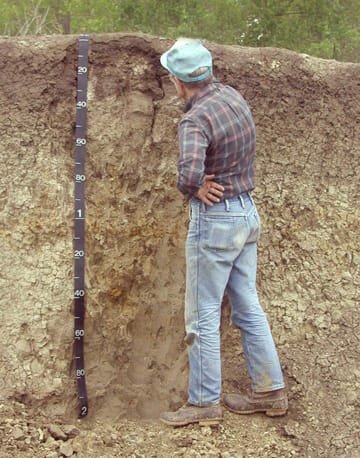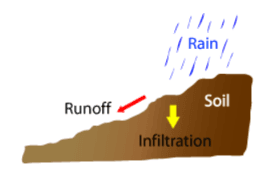Soil science and climatic factors are two fundamental pillars of agronomy that directly influence crop productivity and agricultural sustainability. Understanding their intricate roles helps farmers optimize cultivation practices, enhance yields, and adapt to environmental challenges.
Table of Contents
Soil Science: The Foundation of Agriculture

Soil is not just a medium for plant growth but a dynamic, living ecosystem that sustains agriculture. Its properties determine how well crops can thrive, making soil science essential for farming success.
Physical Properties of Soil
The texture, structure, and porosity of soil affect root development, water retention, and aeration. Sandy soils drain quickly but struggle to hold nutrients, while clay soils retain moisture but may suffocate roots if poorly structured. Loamy soils, with a balanced mix of sand, silt, and clay, are ideal for most crops because they provide good drainage, fertility, and root support. Soil compaction, often caused by heavy machinery, reduces pore space, limiting root penetration and water infiltration. Farmers combat this through tillage practices, cover cropping, and organic matter addition to maintain soil looseness and health.
Chemical Properties of Soil
Soil chemistry governs nutrient availability, pH levels, and salinity, all of which influence crop growth. Essential nutrients like nitrogen (N), phosphorus (P), and potassium (K) must be present in balanced quantities for optimal plant development. Soil pH determines nutrient solubility; acidic soils (low pH) may lock away phosphorus and increase toxic aluminum levels, while alkaline soils (high pH) can limit iron and zinc uptake. Farmers use lime to raise pH or sulfur to lower it, ensuring the soil environment suits their crops. Salinity, a growing concern in irrigated areas, stunts growth by disrupting water absorption. Techniques like leaching excess salts and planting salt-tolerant crops help manage this issue.
Biological Properties of Soil

Healthy soil teems with microorganisms bacteria, fungi, earthworms that decompose organic matter, recycle nutrients, and improve soil structure. Mycorrhizal fungi, for example, form symbiotic relationships with plant roots, enhancing water and nutrient absorption. Overusing chemical fertilizers and pesticides can harm these organisms, reducing soil fertility over time. Practices like crop rotation, composting, and reduced tillage promote microbial activity, fostering a resilient soil ecosystem.
Soil-Water Relationship

Water is a lifeline for crops, and soil acts as its reservoir. The soil’s ability to retain and supply water depends on its texture and organic content. Field capacity (maximum water soil can hold) and wilting point (minimum water plants need) guide irrigation scheduling. Sandy soils drain too fast, risking drought stress, while clay soils may waterlog roots. Mulching and drip irrigation help conserve water, ensuring crops receive consistent moisture without waste.
Climatic Factors: The Invisible Hand in Agriculture
Climate dictates what crops can grow where and when. Temperature, rainfall, sunlight, and wind patterns shape agricultural systems, making understanding climatic factors vital for crop planning and risk management.
Temperature
Each crop has a specific temperature range for germination, growth, and reproduction. Wheat thrives in cooler climates (15–20°C), while rice requires warmth (25–35°C). Frost can kill tender plants, and heatwaves may cause pollination failure in crops like maize. Farmers adapt by selecting climate-resilient varieties, adjusting planting dates, or using protective measures like mulches and shade nets. In colder regions, greenhouses extend growing seasons, while in hot areas, drought-tolerant crops like millets are prioritized.
Rainfall and Precipitation Patterns
Water availability is critical, and erratic rainfall poses significant challenges. Droughts stunt growth, while excessive rain causes flooding, leaching nutrients and promoting diseases. Monsoon-dependent regions, like India, rely on timely rains for kharif crops (e.g., rice), while winter crops (rabi) depend on residual soil moisture or irrigation. Climate change has disrupted traditional patterns, forcing farmers to adopt rainwater harvesting, drought-resistant crops, or precision irrigation to cope.
Sunlight and Photoperiodism
Sunlight drives photosynthesis, and day length (photoperiod) influences flowering in crops like soybeans (short-day) and barley (long-day). Insufficient light reduces yields, while excessive UV radiation can damage plants. In dense plantations, proper spacing ensures light penetration, while in low-light regions, farmers may opt for shade-tolerant crops like certain leafy greens.
Wind and Extreme Weather
Strong winds erode topsoil, damage crops, and increase evaporation. Coastal areas use windbreaks trees or shrubs to protect fields. Cyclones and hailstorms can devastate harvests; early warning systems and insurance help mitigate losses. Climate-smart practices, such as agroforestry and soil conservation, buffer farms against such extremes.
Interplay Between Soil and Climate
The synergy between soil and climate defines agricultural potential. Fertile soil can’t compensate for a water-scarce climate, nor can ideal weather rescue nutrient-depleted land. For instance, the fertile Chernozem soils of Ukraine excel in wheat production partly due to the region’s temperate climate. Conversely, arid regions with poor soils, like parts of Africa, struggle without irrigation and soil amendments.
Farmers leverage this interplay by:
- Matching crops to local conditions: Rice in flooded alluvial soils, grapes in well-drained sandy loams.
- Adapting to climate shifts: Switching to short-duration varieties in erratic rainfall zones.
- Enhancing soil resilience: Organic matter boosts water-holding capacity in drought-prone areas.
Conclusion
Soil science and climatic factors are inseparable from agricultural success. Healthy soils provide the foundation for robust crops, while favorable climates amplify their potential. As climate change intensifies, integrating soil conservation with climate adaptation through techniques like conservation agriculture, agroecology, and precision farming will be crucial for feeding the future sustainably. By respecting these natural systems, agriculture can thrive amid growing environmental challenges.
Frequently Asked Questions
What exactly is soil science?
Soil science is the study of soil as a natural resource, examining its formation, classification, physical and chemical properties, and biological components. It combines aspects of geology, biology, chemistry, and physics to understand how soils function in ecosystems and support plant growth. Soil scientists work to improve agricultural productivity while maintaining environmental quality
What career paths are available in soil science?
Soil science offers diverse career opportunities including agricultural extension services advising farmers, environmental consulting assessing land development impacts, government positions managing natural resources, academic research advancing soil knowledge, and specialized roles in viticulture, forestry or remediation
What environmental challenges does soil science address?
Modern soil science plays a critical role in addressing pressing environmental issues including soil erosion control, contaminated land remediation, wetland restoration, and climate change mitigation through carbon sequestration. Soil scientists develop techniques to rehabilitate degraded lands, improve water quality by reducing agricultural runoff, and maintain ecosystem services in both natural and urban environments. Their work helps balance human needs with environmental protection.
Related Articles

